Eric Adams Hosts Second ULURP Public Hearing For 80 Flatbush
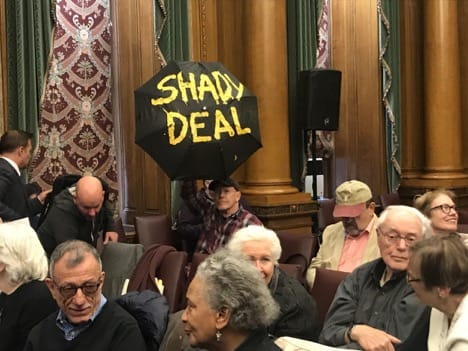
BROOKLYN BOROUGH HALL – Brooklyn Borough President Eric Adams held the second ULURP (Universal Land Use Review Procedure) public hearing for Alloy Development’s 80 Flatbush project Monday at Borough Hall.

Over 280 people filed into Borough Hall’s courtroom, community room, and the borough president’s conference room, the latter of which was equipped with monitors for live viewing of the event. Of the 98 people who testified during the nearly four-hour event, a little more than half objected to the controversial project while the remaining supporters cited affordable housing and educational opportunity as welcome improvements to the area.
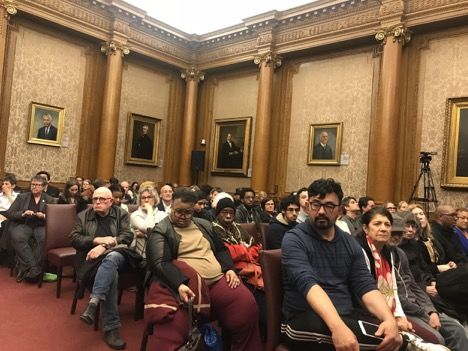
The site is bounded by Flatbush Avenue, Schermerhorn Street, 3rd Avenue, and State Street. Alloy’s two mixed-use towers look to incorporate 700 market-rate apartments, 200 permanently affordable units and 15,000 square feet of cultural space, all to be housed in one 38-story building and another 74-story structure. The plan also includes a 40,000-square-foot ground floor commercial/retail space and two new schools including a 350-seat elementary school and a new facility for the Khalil Gibran International Academy High School.
The full development project will be comprised of 5 separate buildings on the site, with the cultural space included in the preserved historic building, the schools each receiving their own buildings and the two towers including the office space, housing and retail space.
Monday’s hearing comes after Brooklyn Community Board 2’s Land Use Committee voted against the Alloy project citing the potential effects on traffic, public transit and the neighborhood’s character. CB2 will render their recommendation on May 9.
The latest argument from some young Brooklyn newcomers suggested the Alloy project would divert further gentrification to places such as Crown Heights, Bedford Stuyvesant, and Sunset Park.
“People coming to town will contribute to even more gentrification in parts of the city that are already burdened by displacement and strained by traffic and congestion,” said Dan Miller. While others posed the question, “would you rather have more towers in the sky or more rapid displacement in Bed-Stuy?”

Days before the hearing, the Arab American Family Support Center delivered 600 signatures in favor of the proposed 80 Flatbush project. In the letter, Chair of the AAFSC noted that in addition to increasing the student-count to 50, the 19th-century structure that currently houses KGIA High School does not have adequate electrical or ventilation.
Those opposing the project voiced school safety concerns as well but from the perspective of the traffic-heavy intersection at the proposed site.
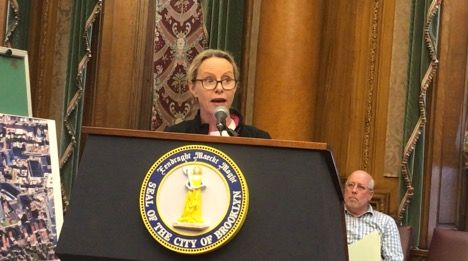
“You want to have 5-, 6-, and 7-year-old children exiting school, full of energy, unaware of the danger created by a car-infested area?” asked Cynthia Salette. “As the mother of an elementary school child, I have grave concerns about placing an elementary school on Flatbush and State Street.” While the elementary school entrance will be mid-block on State Street, crossing Flatbush is likely to remain a concern for some parents.
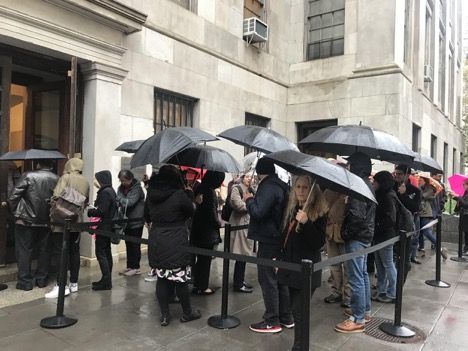
Like Salette, many who attended the March ULURP hearing lined up once again to voice their opposition. Lawmakers and some local residents who testified against the project cited the scale would put a strain on the neighborhood’s infrastructure. Advocates who fear the structures will cast harmful shadows on gardens and green spaces had the help of experts during the hearing.
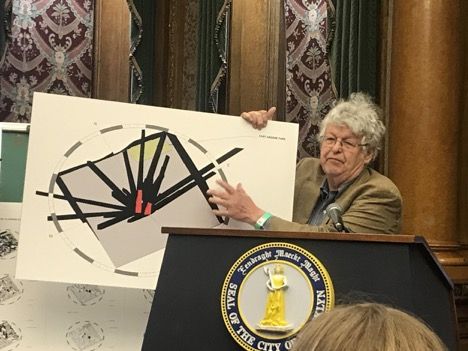
Professor Brent Porter of the Pratt Institute School of Architecture, and a long-time Clinton Hill resident, brought student-designed topographical maps to show the reach and direction of the shadows the project is said to create.
“This new complex, we found, will create a huge impact shadow and it will reach all the way up to Fort Greene Park,” said Porter.
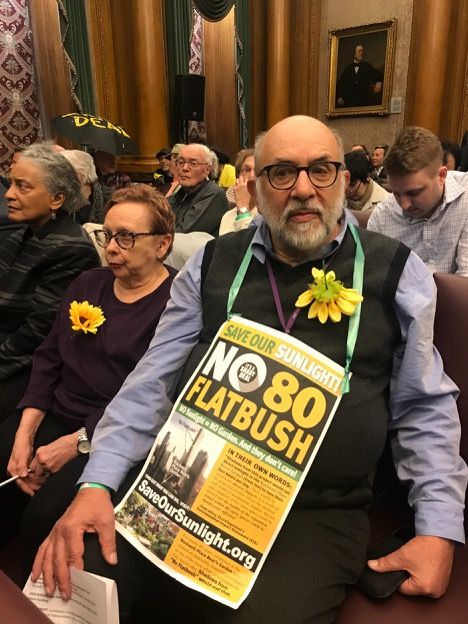
But affordable housing dominated both sides of the debate. Some argued the affordable housing allotment is too little, while others said the use of $95,000 Area Median Income (AMI) in affordability calculation disqualifies too many potential residents. The affordable units will be targeted at tenants making 60% of AMI, the income for which ranges from $44,000 (single person) to $56,000 (family of three), so technically no one with a $95,000 salary would qualify for the affordable units.
Several political officials sent representatives on their behalf to denounce the project, including State Senator Velmanette Montgomery and Assembly Member Jo Anne Simone.
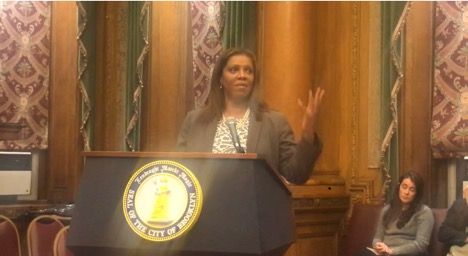
Public Advocate Letitia James dropped in to reiterate her opposing stance with some fiery direction to the City Council who will ultimately render the final decision on the project.
“The Manhattanization of Brooklyn, unfortunately, has impacted our quality of life,” said James. “I urge the City Council to…have some spine and to stand up to the developer.”
The next phase of the process will include a City Planning Commission review, followed by a final vote by the City Council.
NOTE: Updated to clarify AMI requirements, the location of the elementary school entrance and the scope of the entire project.



